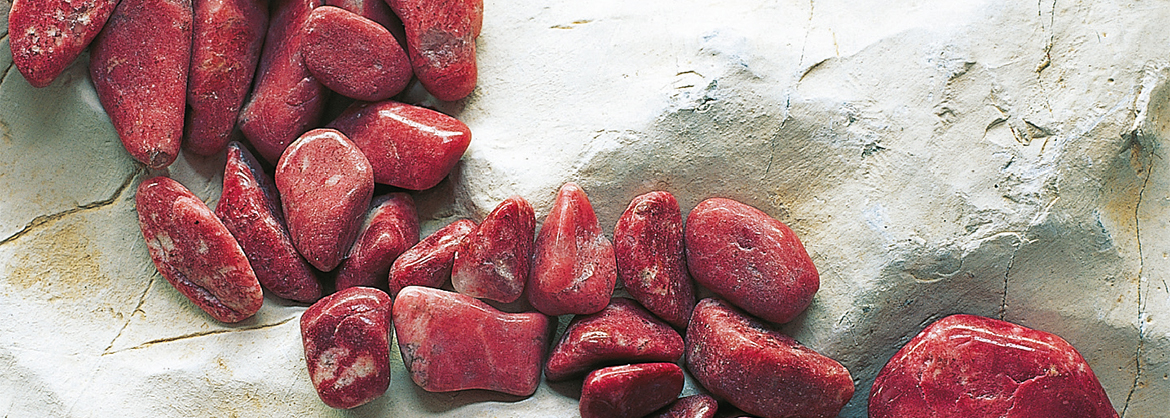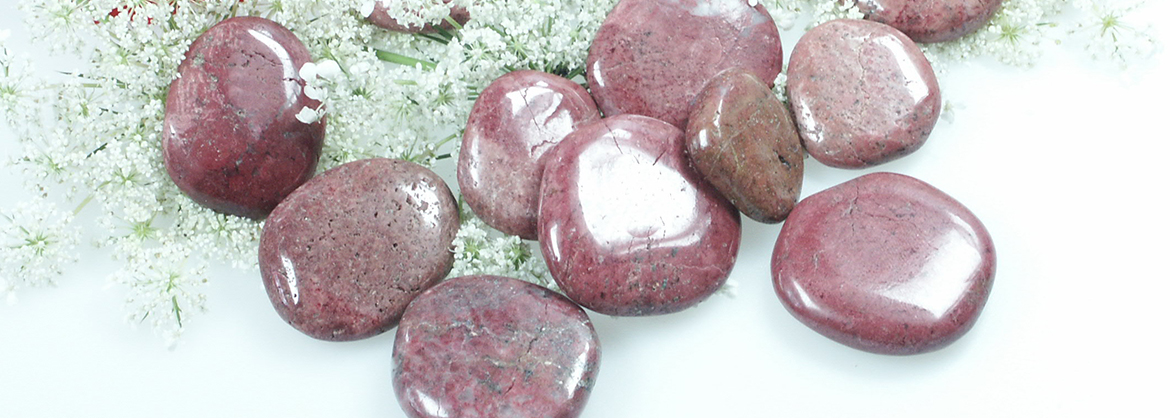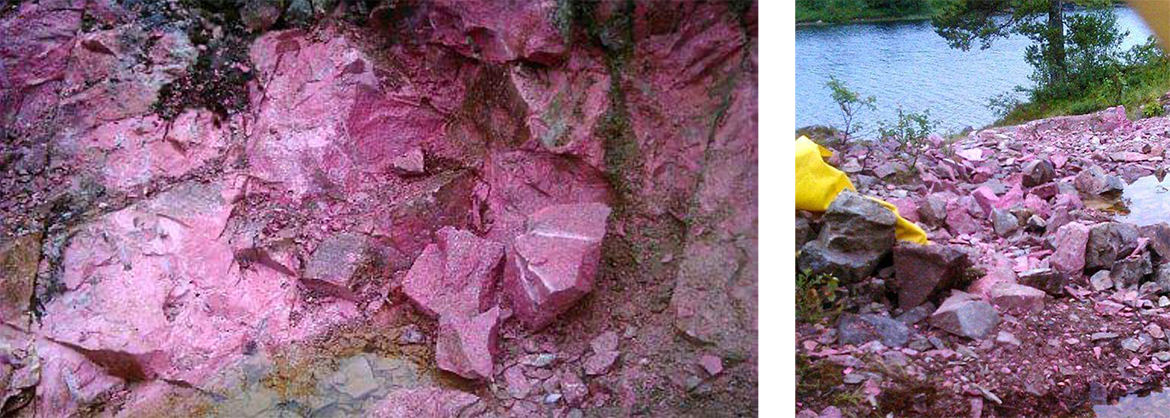
Stone of the Month May 2025: Thulite - Bearing and meaning of a gemstone from far north
Nature is full of energy and vigour. Full of vitality it blossoms, grows and flourishes wherever we look. Every day the sun pampers us with light and warmth a little bit more. Joy of life and fertility now have their special place in the course of the year.
Thulite helps to jump over his own shadow and try new things. The curiosity for experiences, experiences and life itself is strengthened, desires and needs are needs are lived out. The dormant spirit of adventure in everyone is awakened by the Thulite, so that challenges can be accepted and overcome more easily. Resistance in the implementation of our plans is therefore perceived as an opportunity and not as an obstacle. not an obstacle. If not everything goes as planned, Thulite gives us creativity and inventiveness.
Mineralogical profile Thulite
Chemical Formula: (Ca,Mn)2Al3[O/OH/SiO4/Si2O7]
Mineral Class: Group Silicate
Formation: metamorphic by the transformation of manganese ore and Feldspar to manganzoisite (Thulite)
Color: red, pink to red-purple, often mixed with white or gray, occasionally black portions of Calcite or quartz
Gloss: Mother of Pearl or vitreous luster
Crystal system: rhombic
Density: 3.25 - 3.36
Mohs hardness: 6 to 6.5
Cleavability: perfect splitability, uneven fracture
Streak: white
Transparency: mostly opaque, occasionally translucent
Localitier, main supplying countries: Norway, Australia, USA
Appearance: granular to fine-grained dense masses, sometimes with aventurine-like glitter or mixed with colorless Feldspar
Use: Thulite is sometimes processed as an ornamental stone or cut as a cabochon, as a jewelry stone Thulite is used rather rarely. In gemstone medicine Thulite gained due to its sensual and stimulating effects great popularity. Here it is used to stimulate life energy and creativity as well as to promote lust and sensuality. Astrology uses Thulite to convey lust and sensuality to Virgo and Capricorn-born people.
Availability: rare
Tumbled stones, smooth stones, drilled focal components and more Thulite at wholesale price

Origin of the name Thulite and synonyms
In 1823, the English mineralogist Henry James Brooke (1771 - 1857) gave thulite its name after the legendary island of Thule, which, according to Germanic lore, forms the northern edge of the world. At that time the only known occurrences of Thulite were were in Norway. Synonyms are manganzoisite and unionite.
Spectacular: Finds of thulite in Norway
In 1820 Thulite was found for the first time and described scientifically. For a long time, this locality in the area around Lom (Telemark; about 300km northwest of the Norwegian capital Oslo) was the best-known and only locality for Thulite. The Thulite found here is of rather darker color. Meanwhile, however, is only rarely Thulite from Lom In retail or wholesale available.
